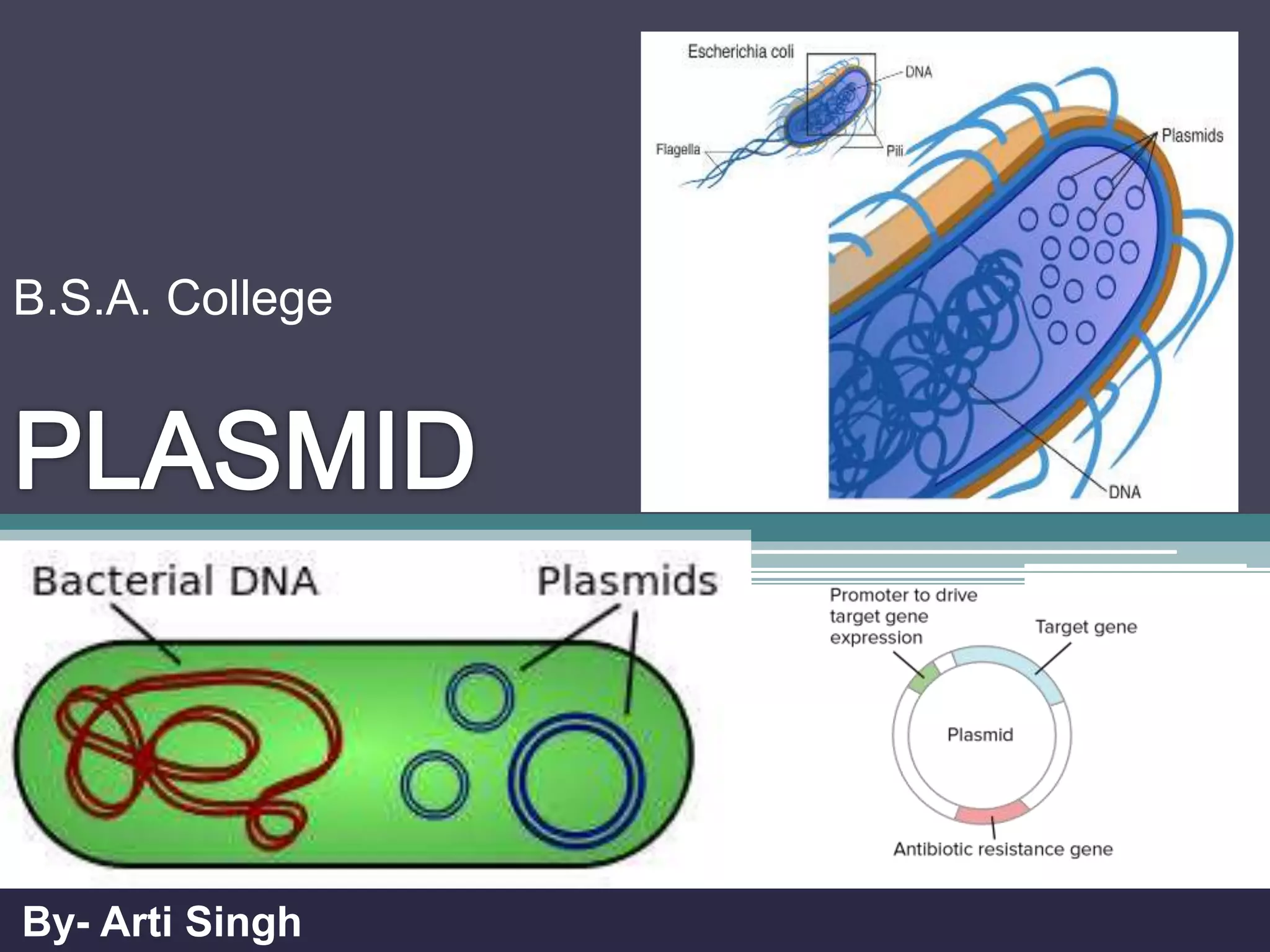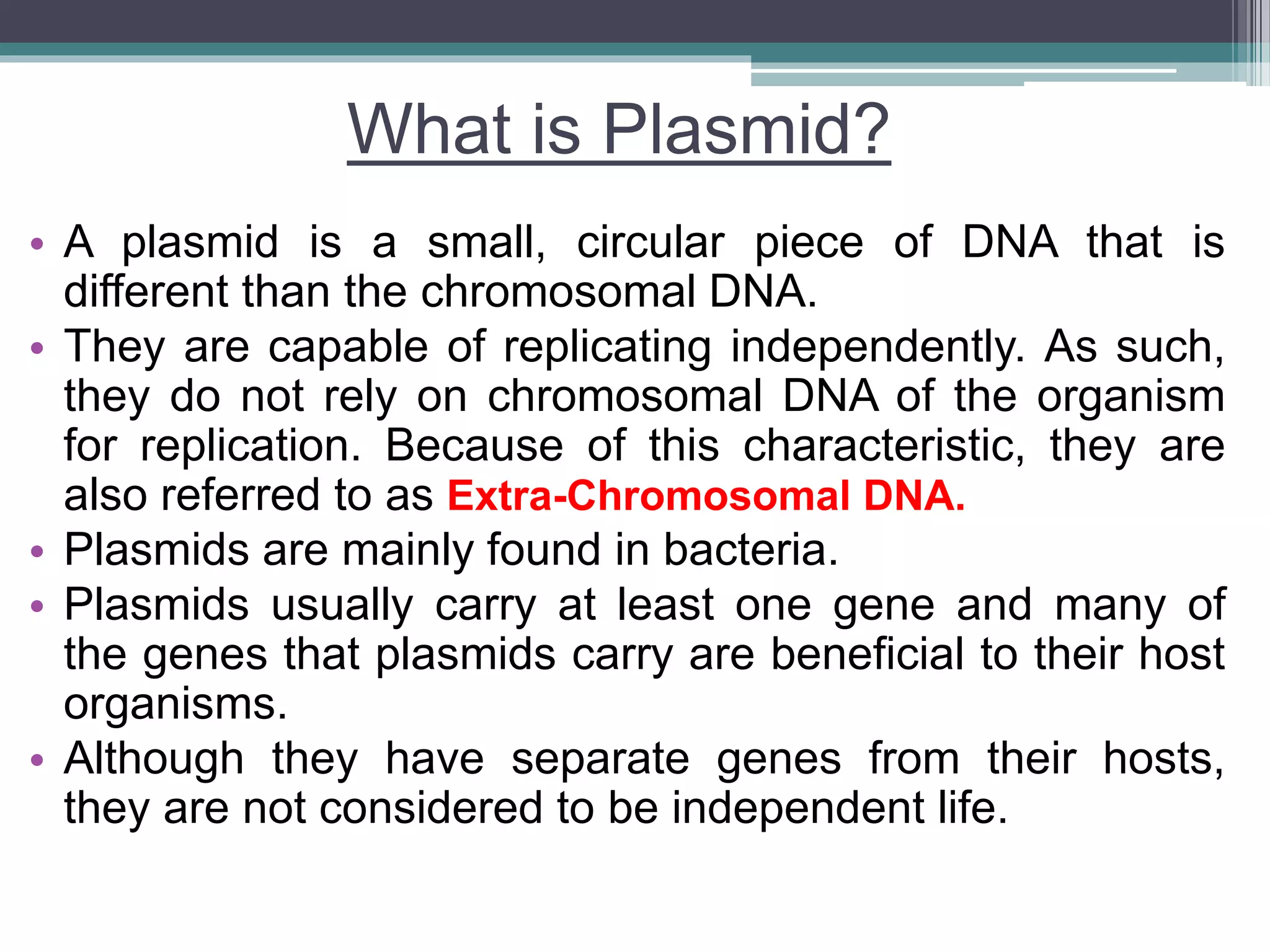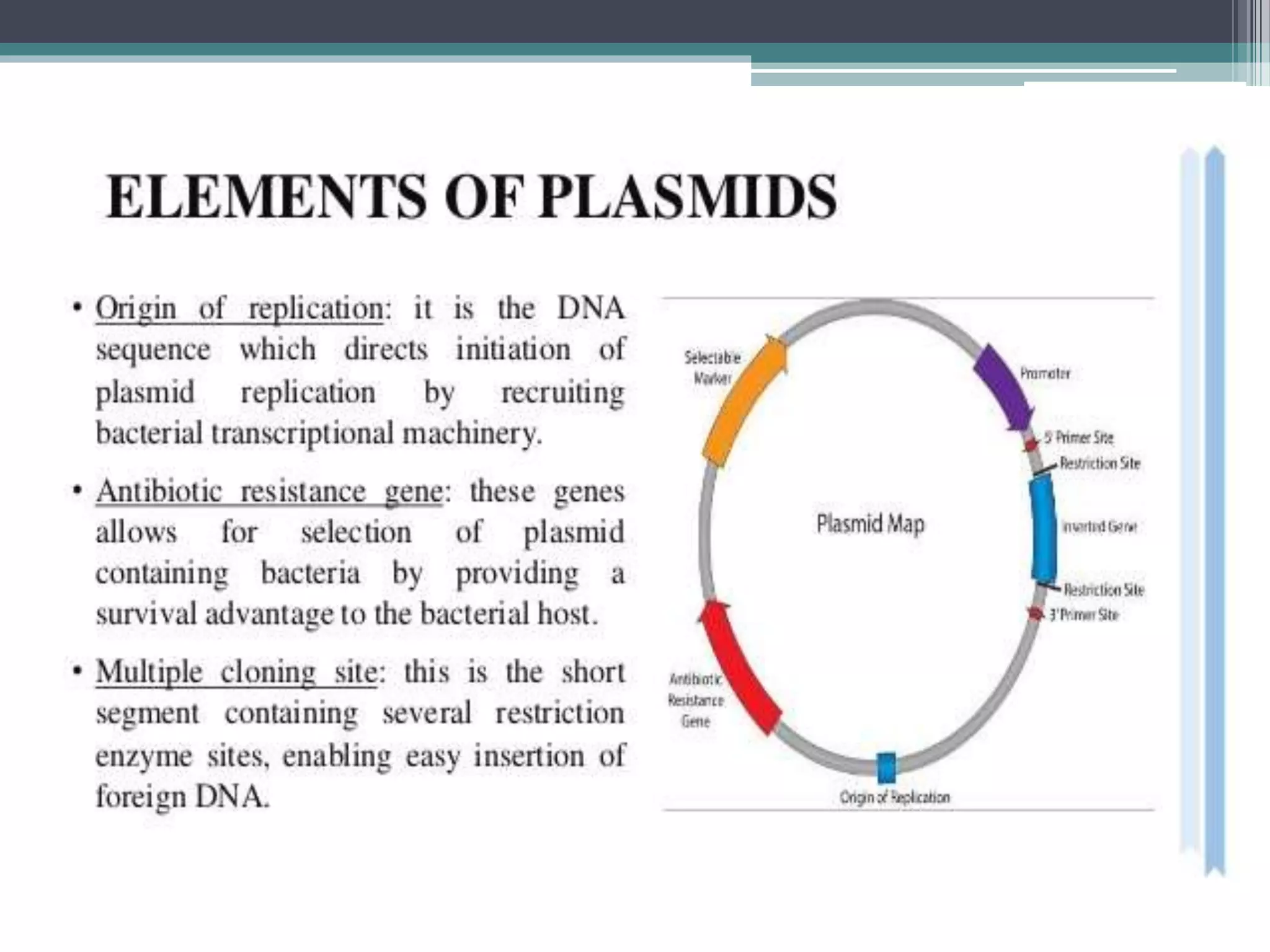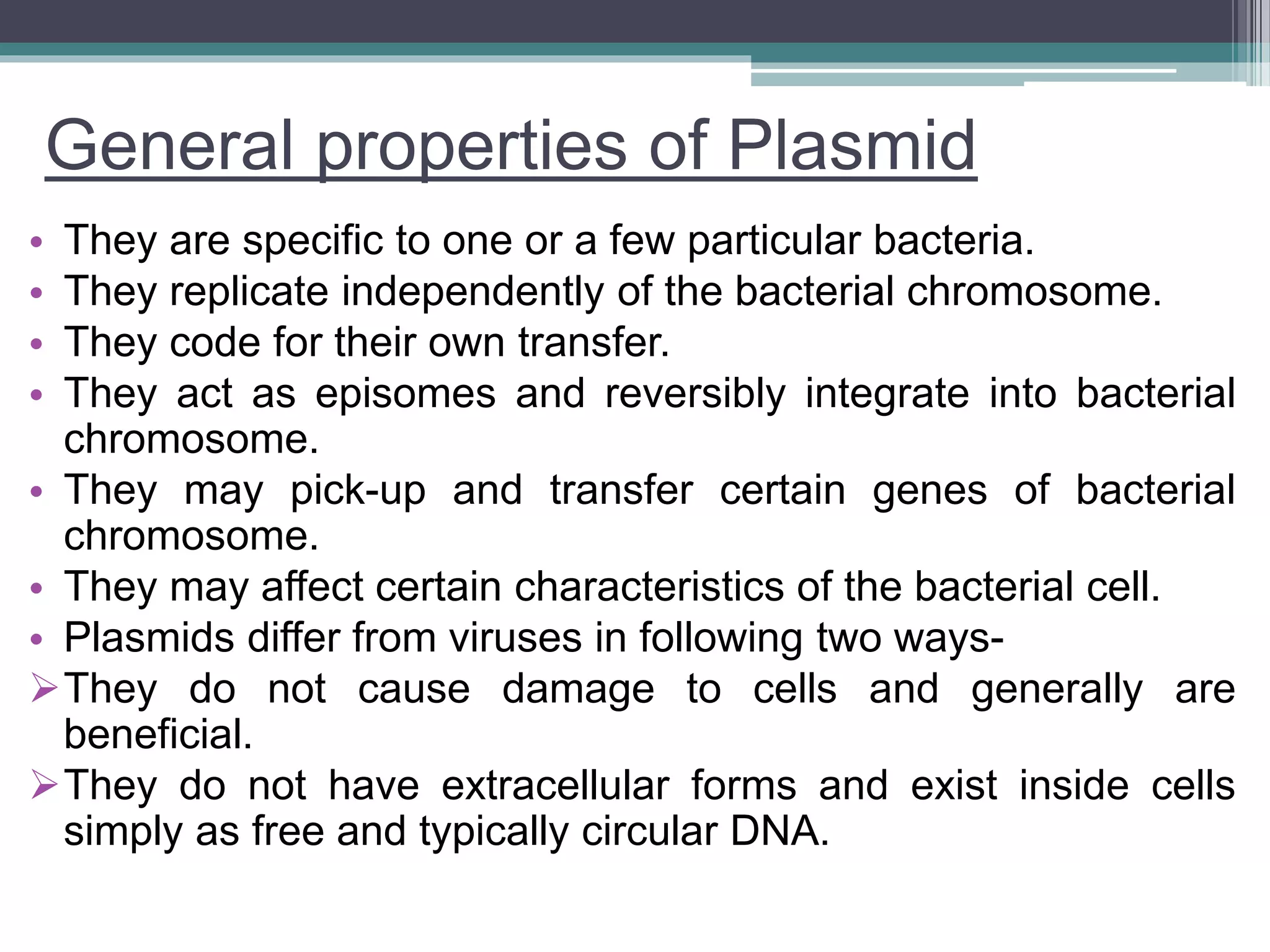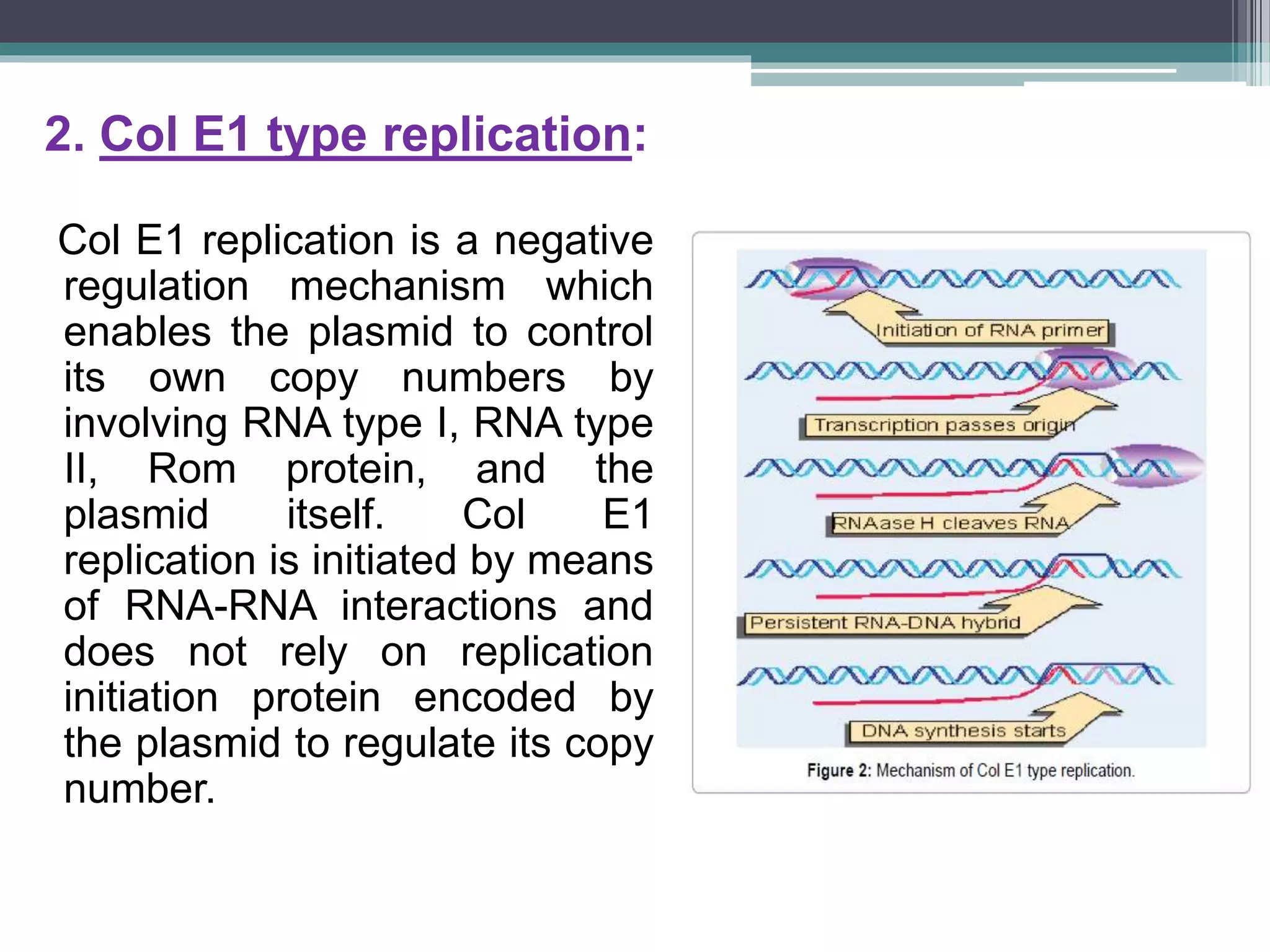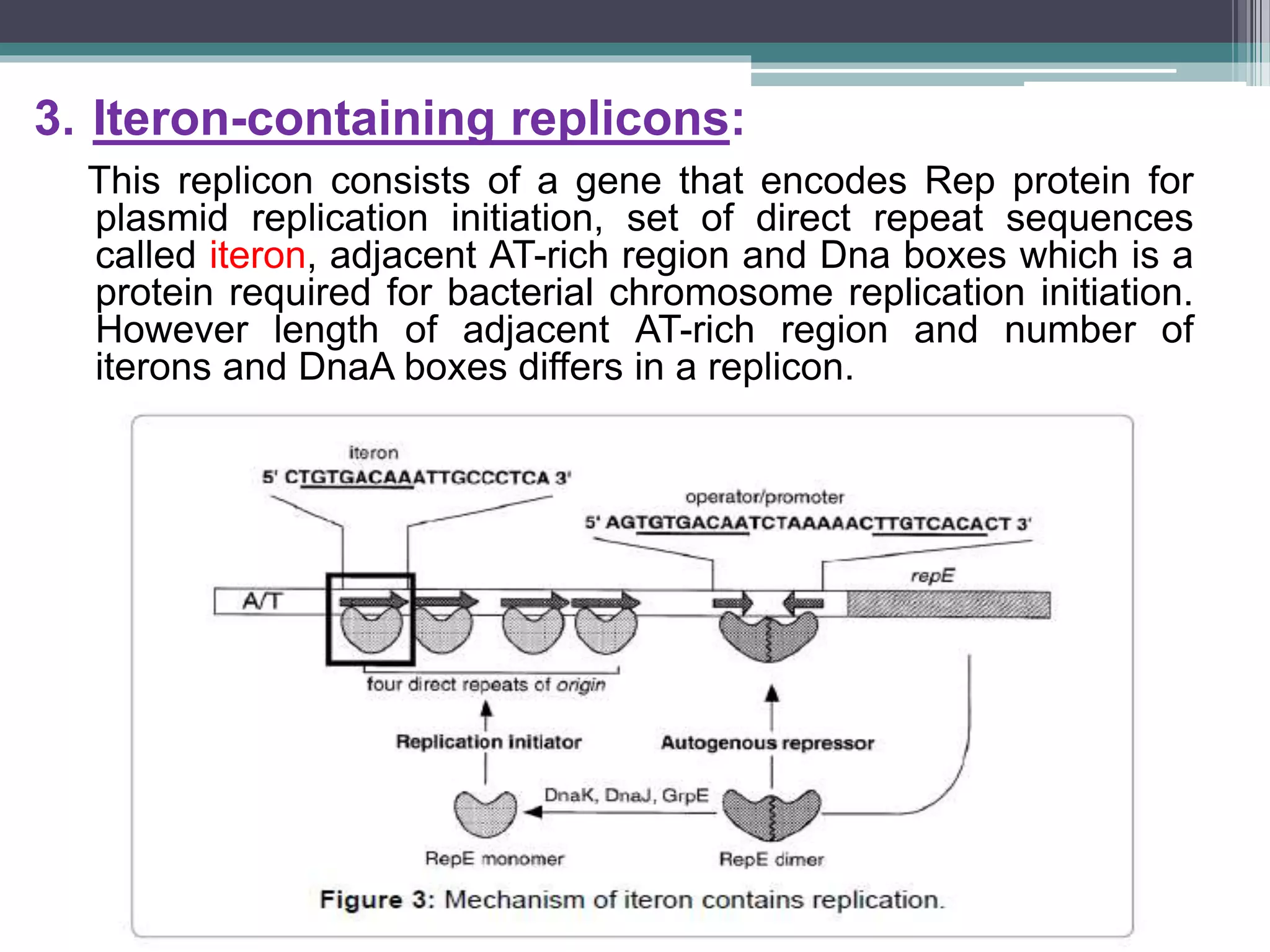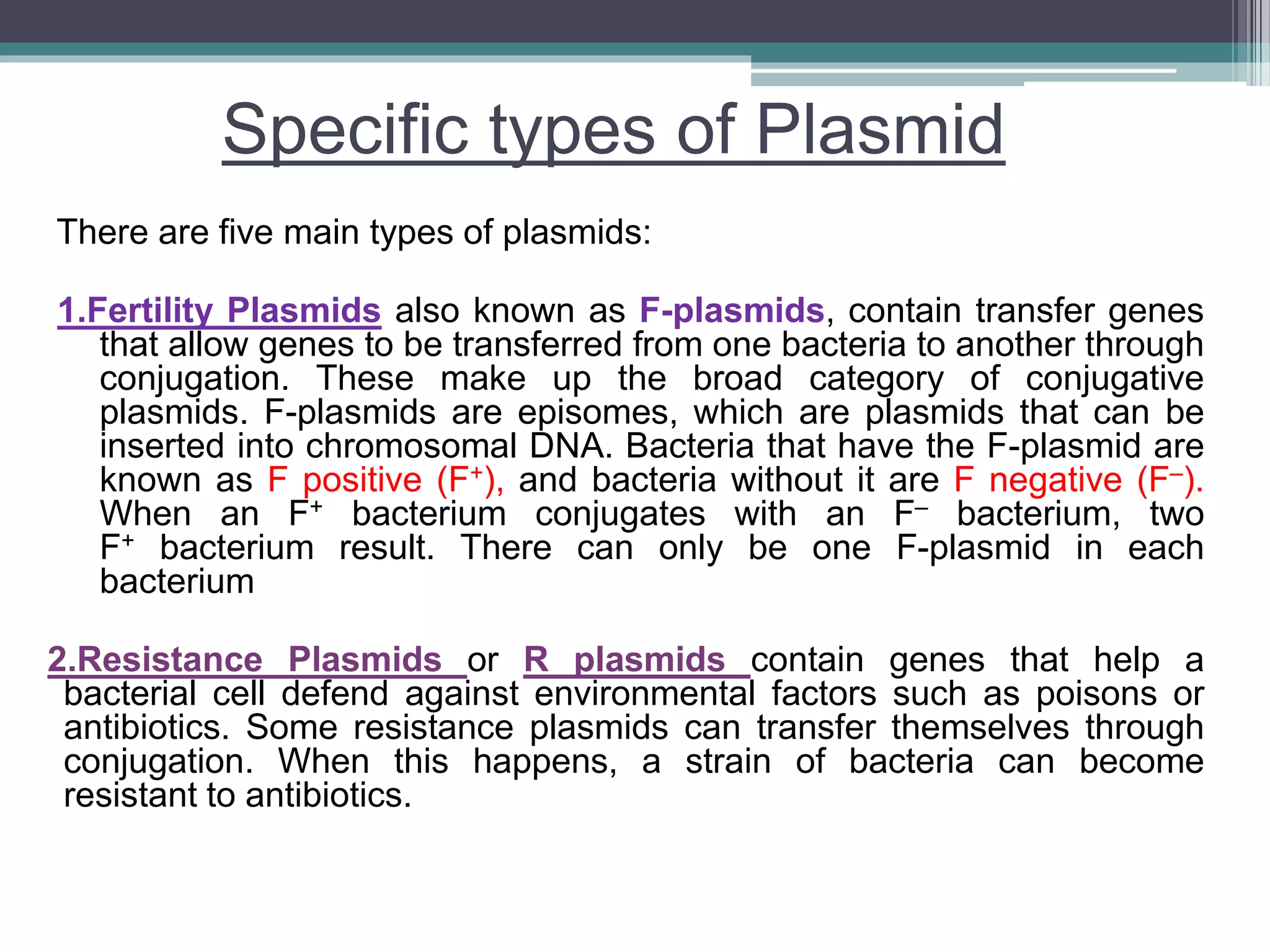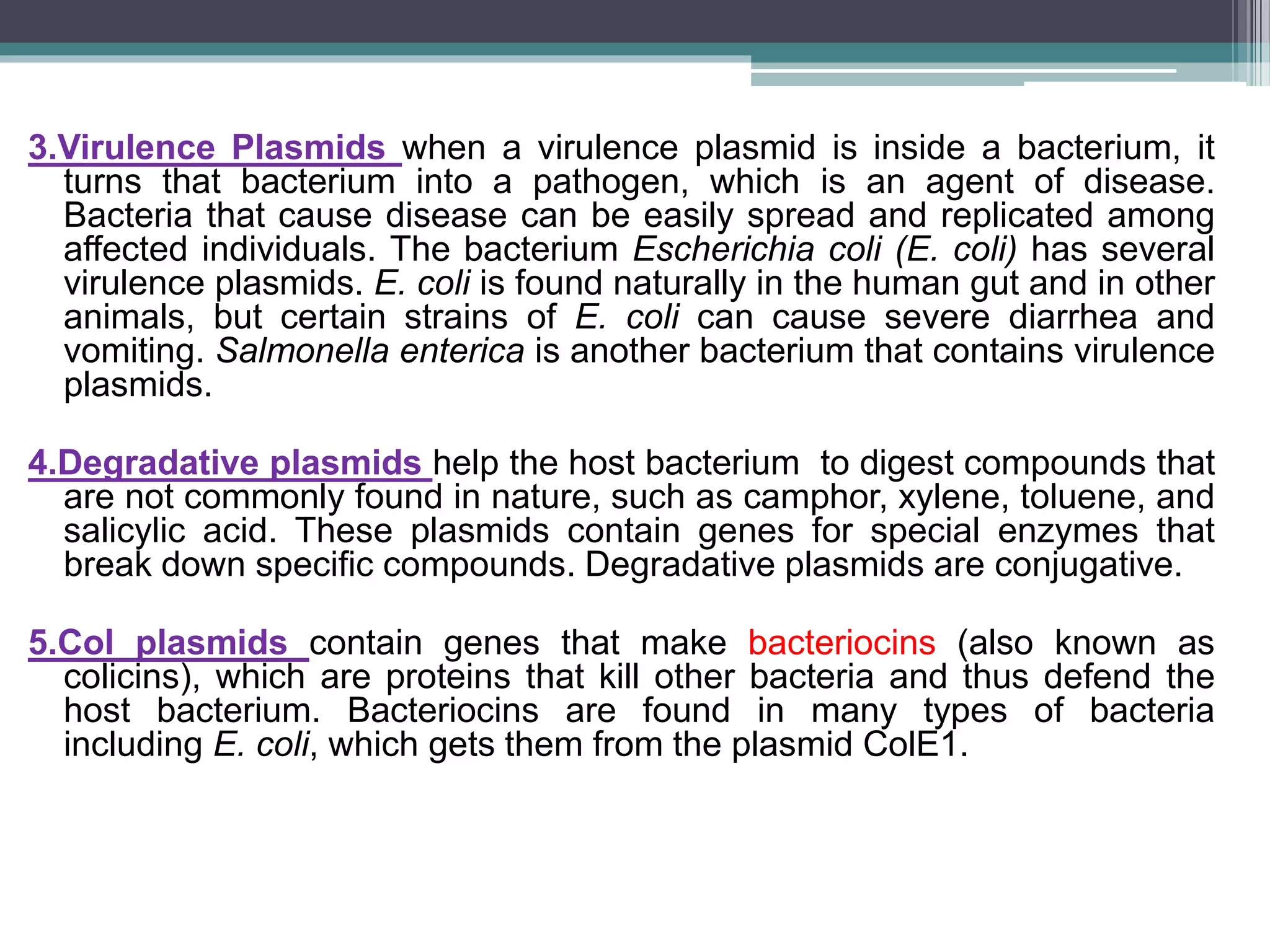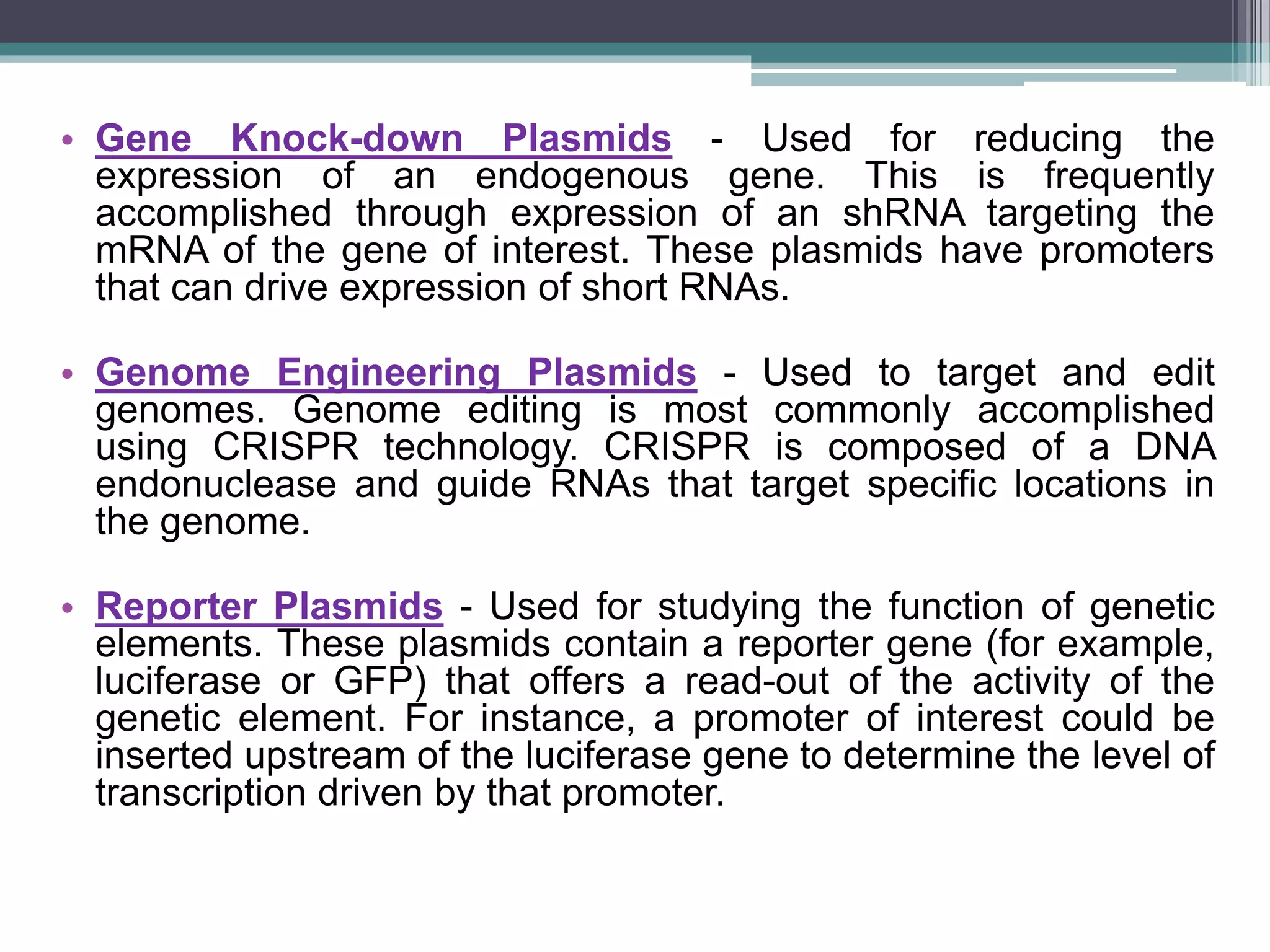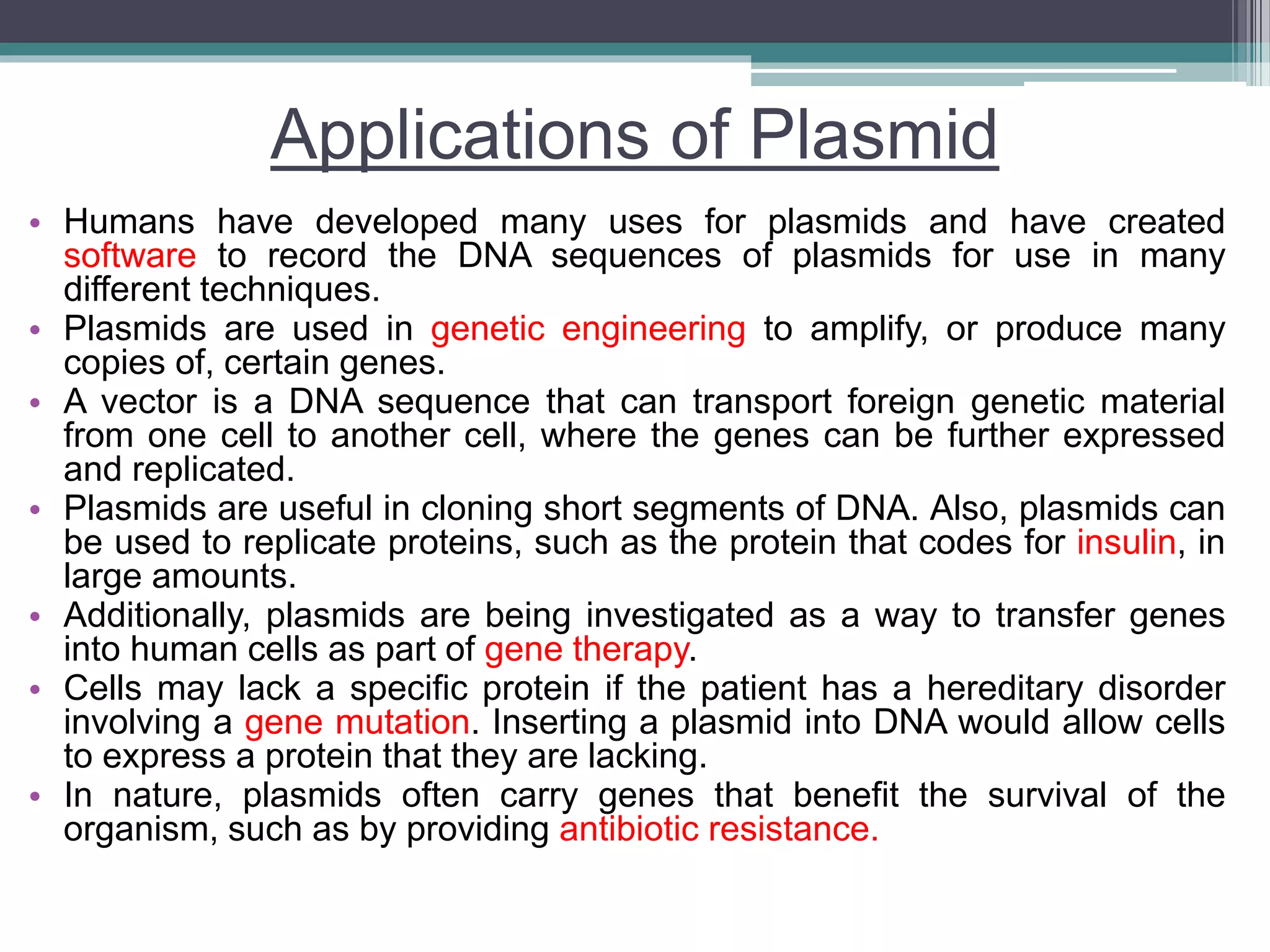Plasmids are small, circular pieces of DNA found mainly in bacteria that replicate independently from chromosomal DNA and often carry beneficial genes. They can be classified into various types, such as fertility, resistance, virulence, degradative, and col plasmids, each with specific functions in genetic transfer and bacterial characteristics. Additionally, plasmids are widely used in biotechnology for cloning, gene expression, gene knockdown, genome editing, and as vectors for gene therapy.
